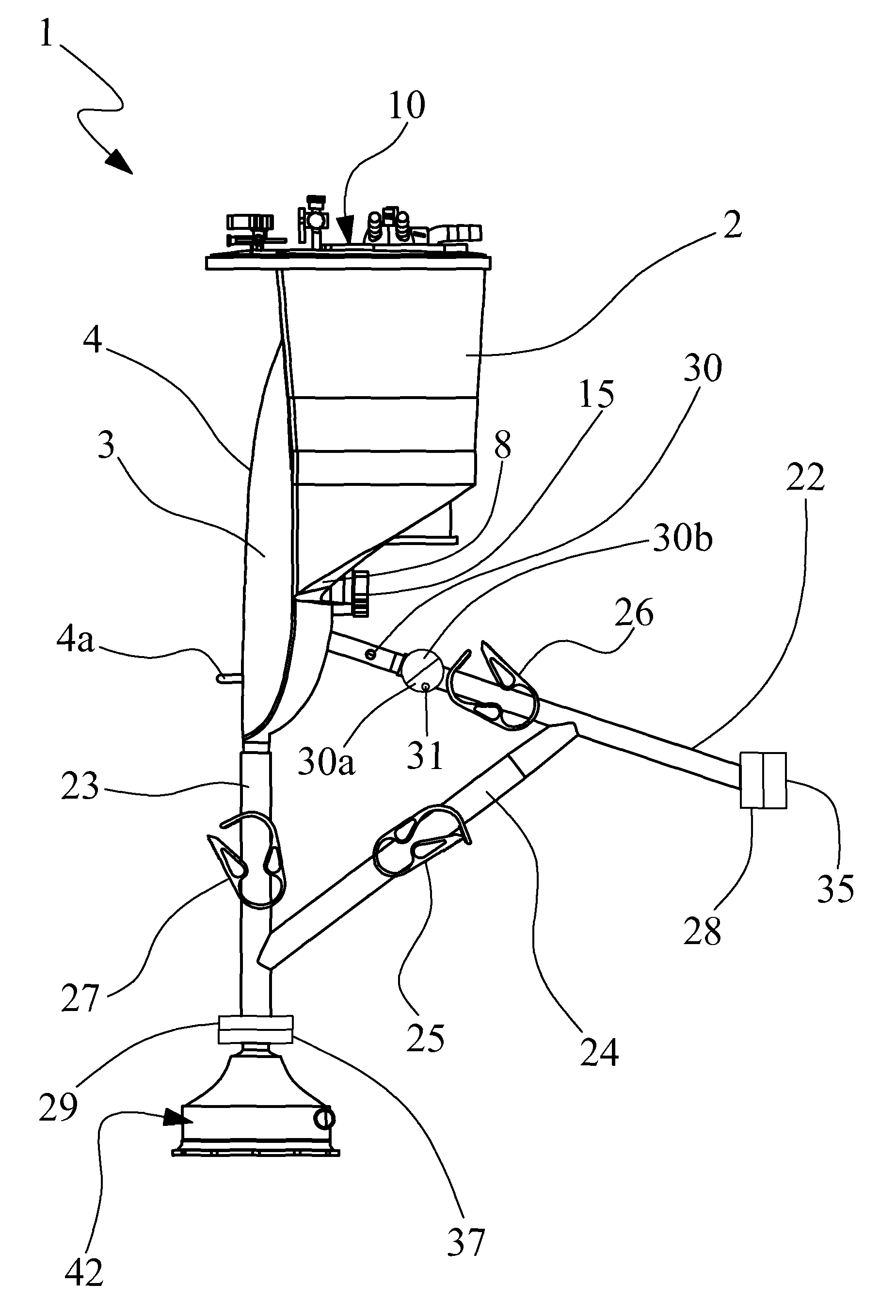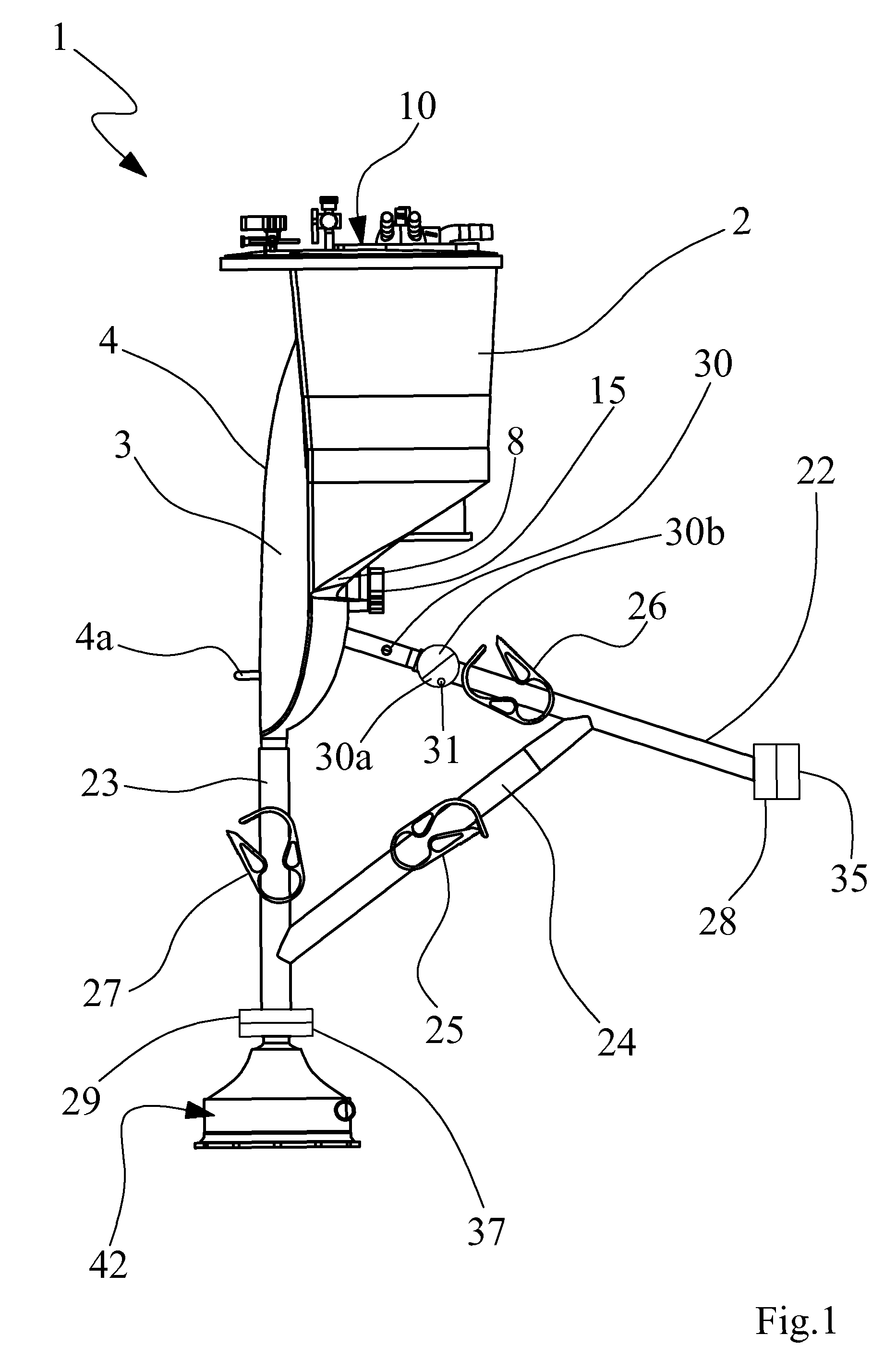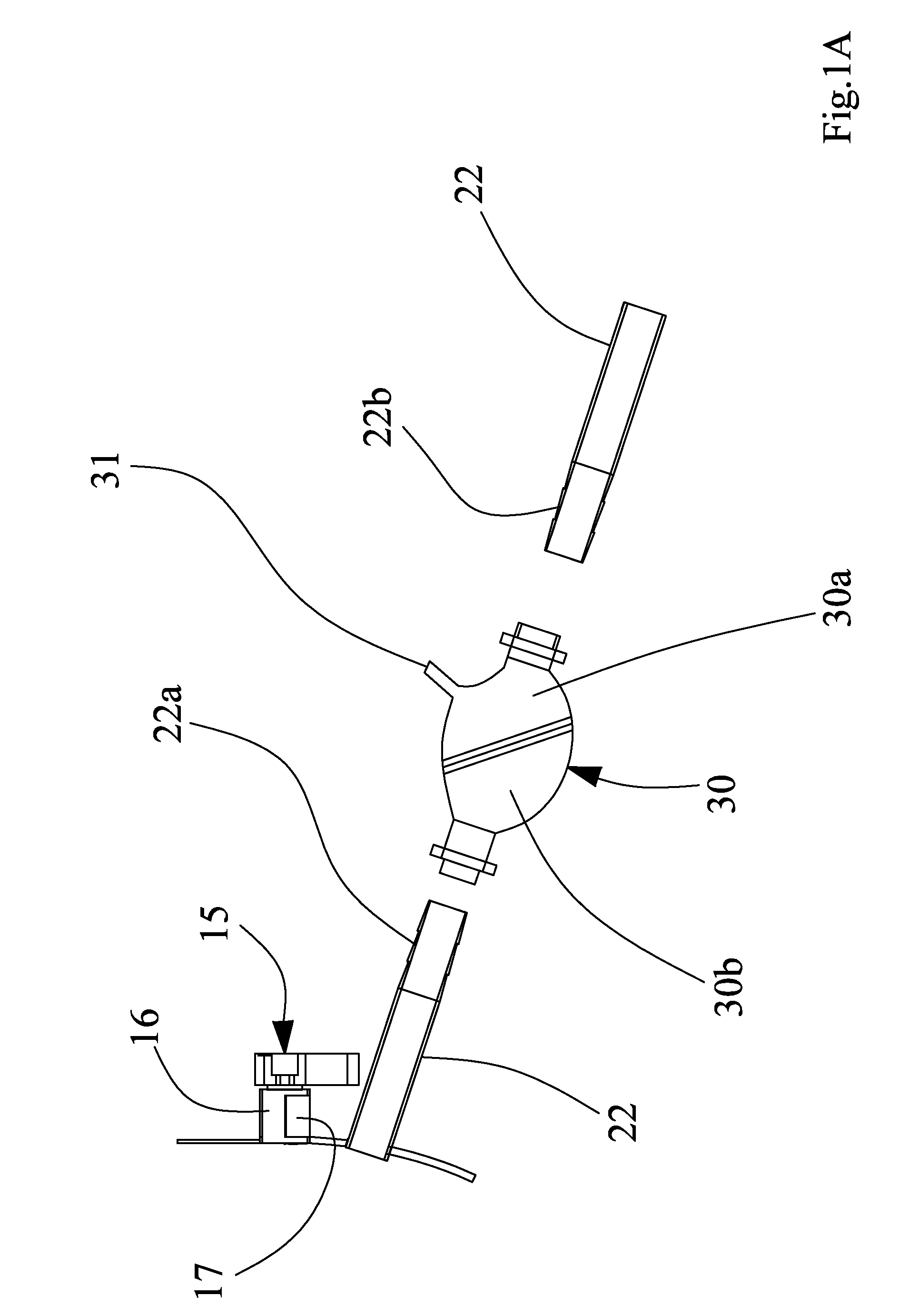Device for medical use for collecting and transit of blood, blood derivatives and/or filler fluids, and an extracorporeal circuit comprising the device
a technology of collecting device and reservoir, which is applied in the field of collecting device or reservoir, for medical use, for collecting and transiting blood and/or blood derivatives and/or filler fluids and to an extracorporeal circuit comprising the reservoir, which can solve the problems of increased operating complexity, increased risk of deformation bag air accumulation, and grave consequences for patients, so as to facilitate the separation of the deformational portion
- Summary
- Abstract
- Description
- Claims
- Application Information
AI Technical Summary
Benefits of technology
Problems solved by technology
Method used
Image
Examples
Embodiment Construction
[0116]With reference to the accompanying figures, 1 denotes in its entirety a collecting device of biological fluids for medical use. The device 1 is usable for various methods of extracorporeal circulation. As will be more fully described below, the exclusion, even temporary, of the device or reservoir 1, by activation of the bypass line associated thereto, produces an “active venous drainage” that enables the performance of various methods such as ECLS (extra corporeal life support), ECMO (extra corporeal membrane oxygenator), intra-operative ECMO. The device can further be used for treatments where it is necessary to store blood, blood derivative products and / or fluids and return or introduce them into the patient undergoing treatment.
[0117]As shown in FIGS. 1 and 4, the collecting device 1 comprises a rigid container 2 flanked to an auxiliary container 3. The rigid container 2 comprises a bottom wall 8 which in the illustrated example is inclined from top to bottom in a nearing ...
PUM
 Login to View More
Login to View More Abstract
Description
Claims
Application Information
 Login to View More
Login to View More - R&D
- Intellectual Property
- Life Sciences
- Materials
- Tech Scout
- Unparalleled Data Quality
- Higher Quality Content
- 60% Fewer Hallucinations
Browse by: Latest US Patents, China's latest patents, Technical Efficacy Thesaurus, Application Domain, Technology Topic, Popular Technical Reports.
© 2025 PatSnap. All rights reserved.Legal|Privacy policy|Modern Slavery Act Transparency Statement|Sitemap|About US| Contact US: help@patsnap.com



